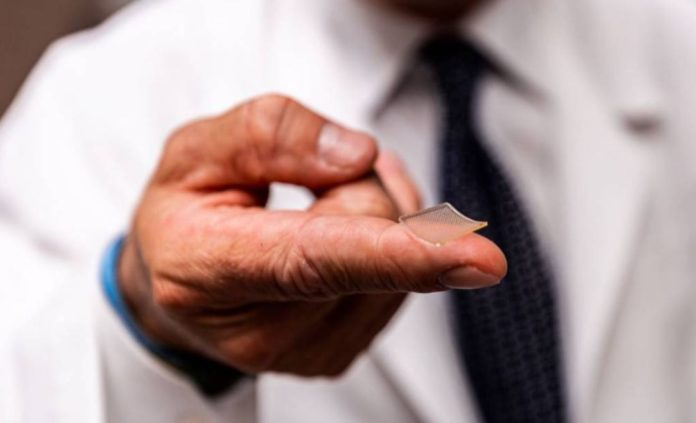Scientists from the University of Pittsburgh in the US have announced a possible vaccine against the new coronavirus. In the form of a patch with microneedles and for now, only tested on rodents, it allows the production of specific antibodies for SARS-CoV-2. Now they must apply for permission to start the human trial.
A team from the University of Pittsburg School of Medicine in the US is presenting a vaccine candidate for COVID-19 today. The work, published in the journal EBioMedicine, is the first to be reviewed by researchers from other institutions (what is known in science as peer review).
The authors are now in the process of requesting approval of the new drug before beginning a phase I clinical trial in humans.
“We had previous experience with SARS-CoV in 2003 and MERS-CoV in 2014. These two viruses, which are closely related to SARS-CoV-2, teach us that a particular protein, called a peak protein, is important for inducing immunity against the virus. We knew exactly where to fight this new virus,” says Andrea Gambotto, associate professor of surgery at the American university and lead author of the study.
Unlike the other mRNA candidate from the US biotech company Moderna, which has just been approved for clinical trials, the proposed vaccine uses pieces of a viral protein made in the laboratory to build immunity. It is the same way that current flu vaccines work.
The authors are now in the process of applying for approval of the new investigational drug from the US Food and Drug Administration (FDA) before beginning a phase I human clinical trial in the coming months.
“Patient testing would generally require at least a year and probably more,” says Louis Falo, professor and director of dermatology at Pitt’s School of Medicine and the University of Pittsburg Medical Center (UPMC).
“This particular situation is different from anything we’ve seen, so we don’t know how long the clinical development process will take. The recently announced revisions to normal processes suggest that we could move faster,” he continues.
Tested on short-term animals only
To administer the possible vaccine, tested in mice and called PittCoVacc – short for Pittsburgh Coronavirus Vaccine – scientists used an approach called deploying microneedles to increase their potency. It is a fingertip-sized patch that contains 400 tiny needles that insert the spiked parts of the protein into the skin, where the immune reaction is strongest.
When tested in mice, PittCoVacc generated a surge of antibodies to SARS-CoV-2 within two weeks of the microneedle stick.
The patch is kept like a band-aid and the needles, made up of sugar and parts of the protein, dissolve in the skin. “We developed it this way to take advantage of the method used to administer the smallpox vaccine, but this is a high-tech version, more efficient and reproducible from patient to patient,” explains Falo. His administration is “actually quite painless, like velcro,” he adds.
When tested in mice, PittCoVacc raised antibodies to SARS-CoV-2 within two weeks of the microneedle stick. Although the animals have not yet been observed in the long term, the researchers note that, in the case of the mice that received the MERS-CoV vaccine, they produced a sufficient level of antibodies to neutralize the virus for at least a year.
For now, the level of antibodies produced in mice vaccinated against SARS-CoV-2 seems to indicate that they will follow the same trend. Scientists note that the microneedle vaccine against this new coronavirus maintains its potency even after it has been sterilized, a key step in making a product suitable for use in humans.
Once tested in humans, hundreds of millions of doses would be needed for the vaccine to be used worldwide, which is why they have made the process reproducible. “With most vaccines, you don’t have to address scalability to get started,” says Gambotto. “But when you try to quickly develop a vaccine against a pandemic, that’s the first requirement,” he concludes.
